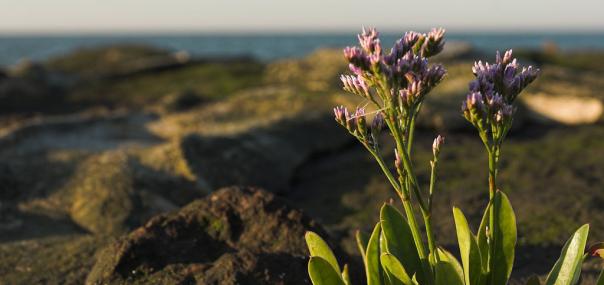Common Sea-lavender grows in muddy, salty pools or saltmarshes along the coast. Its flowers range in colour from blue through to lilac and pink, and can often be seen densely carpeting the ground from July to October. Garden varieties of this plant are popular with flower arrangers as the flowers can be dried and keep their shape and colour.
The Wildlife Trusts look after many coastal habitats for the benefit of plants like Common Sea-lavender, and are working closely with farmers, landowners and developers to promote wildlife-friendly practices in these areas. We have a vision of a 'Living Landscape': a network of habitats and wildlife corridors across town and country, which are good for both wildlife and people. You can support this greener vision for the future by joining your local Wildlife Trust.
